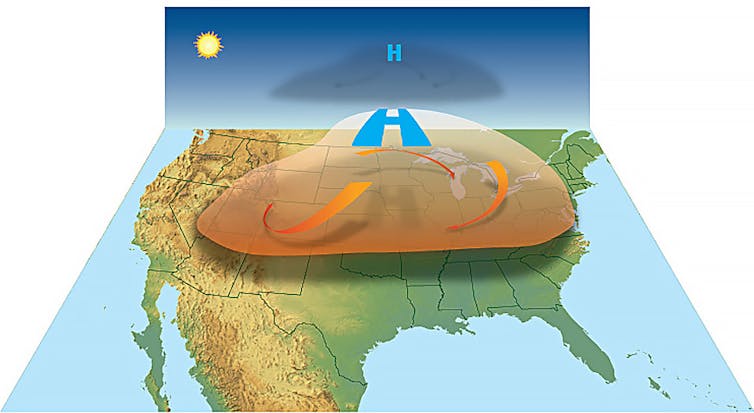High-Profile Allies of Anti-Net Zero Parliamentary Group Revealed in Telegraph Letter
Original article by Adam Barnett and Sam Bright republished from DeSmog according to their republishing guidelines.

New allies of the Net Zero Scrutiny Group (NZSG) of MPs and Lords have today been revealed in a letter published by the Telegraph.
The NZSG campaigns against the UK’s legally binding net zero commitments. The letter reveals new supporters among influential Conservative MPs and peers not previously known to back the group including former Business and Energy Secretary Jacob Rees-Mogg, Lord Frost, Iain Duncan Smith, Andrea Jenkyns, Jonathan Gullis, and Miriam Cates.
The chair of the NZSG, Conservative MP Craig Mackinlay, coordinated the letter – which called for the suspension of a UK scheme that imposes costs on energy-intensive industries for their carbon emissions. The letter was signed by 29 Conservative MPs and peers.
The revelation comes as the Climate Change Committee (CCC), the government’s independent advisory body on climate change, today stated that the UK is missing its climate targets on nearly every front.
The government has been criticised for supporting the continued exploration of North Sea oil and gas sites, in the face of warnings from international climate and energy bodies. Chris Stark, chief executive of the CCC, has said that political leadership was “missing” in the pursuit of net zero.
“The CCC’s report could hardly have been more damning – tearing the government to shreds over its abysmal progress on tackling the climate emergency, and its utterly misleading arguments that fossil fuel expansion is somehow necessary before reaching net zero,” Green Party MP Caroline Lucas told DeSmog.
“Yet this letter from the Net Zero Scrutiny Group proves that Rishi Sunak has clearly been spending more time listening to a group of climate delayers and deniers in his own party, rather than scientists and independent experts … It’s time for the prime minister to slam the door in the face of fossil fuel interests once and for all.”
All signatories of the letter were asked by DeSmog to confirm whether they were members of NZSG. Only two of the 29 parliamentarians – Conservative MPs Holly Mumby-Croft and Jack Brereton – denied being formally part of the group, while a third, Kelly Tolhurst, said that she was in favour of net zero but that “there is not just one way to meet net zero and it is right to raise concerns over policy that could impact the competitiveness of the UK.”
Founded in 2021, the NZSG has never released a full list of its members, meaning that the parliamentarians linked to the group can only be discerned from the individuals who sign its public letters.
The New Allies
The list of NZSG allies released today includes individuals associated with the Global Warming Policy Foundation (GWPF), the UK’s principal climate science denial group, which has extensive ties with the parliamentary caucus.
The letter in the Telegraph was signed by Conservative MP Andrea Jenkyns and Lord Frost, both of whom are directors at the GWPF, which regularly questions the scientific basis of human-caused climate change.
The majority (54 percent) of Conservative MPs who signed the NZSG letter are either current or former members of the European Research Group (ERG) – a faction of the Conservative Party that supported a ‘hard’ Brexit and was reportedly the model for the NZSG.
This includes Rees-Mogg, a former chair of the ERG who served as Business and Energy Secretary from September to October 2022. As revealed by DeSmog, Rees-Mogg spoke of his desire for people to “stop demonising oil and gas” in a private meeting with the head of the United Arab Emirates’s state investment company while serving in the cabinet.
Rees-Mogg has a long record of opposing climate action. In 2014 he claimed that efforts to limit global warming “would have no effect for hundreds or possibly a thousand years” and in 2013 he blamed high energy prices on “climate alarmism.”
Rees-Mogg currently hosts a show on climate sceptic broadcaster GB News, as do fellow NZSG signatories Esther McVey and Philip Davies.
New MPs not previously associated with the NZSG include Miriam Cates, Conservative MP for Penistone and Stocksbridge, who at the National Conservatism Conference in May claimed that “epidemic levels of anxiety and confusion” among young people are being caused by teaching, among other things, that “humanity is killing the Earth”.
The NZSG allies also include several parliamentarians embroiled in controversies. For example, Reclaim Party MP Andrew Bridgen, who was expelled from the Conservative Party in April for comparing the use of Covid vaccines to the Holocaust.
The Reclaim Party itself has a history of opposing climate action. Its website says that “net zero climate policies punish the poorest in society” and the party’s leader Laurence Fox has argued for scrapping “those woke billions” that “we are spending each year to appease the sun monster with offerings of net zero”.
Another signatory of the NZSG letter was Scott Benton, who had the Conservative whip suspended in April after a newspaper sting caught him offering to lobby on behalf of the gambling industry and leak confidential documents.
The full list of signatories was as follows: Craig Mackinlay, Sir Iain Duncan-Smith, Sir Jacob Rees-Mogg, Lord Frost, Esther McVey, Sir John Redwood, Dame Andrea Jenkyns, Sir Robert Syms, Mark Francois, David Jones, Kelly Tolhurst, Sammy Wilson, Andrew Lewer, Jack Brereton, Miriam Cates, Chris Green, Jonathan Gullis, Philip Hollobone, Adam Holloway, Julian Knight, Marco Longhi, Karl McCartney, Holly Mumby-Croft, Philip Davies, Bob Seely, Greg Smith, Andrew Bridgen, Scott Benton, Baroness Foster of Oxton, Baroness Lea of Lymm, Lord Lilley, Lord Moylan, Lord Strathcarron.
Greg Smith told DeSmog that he is “committed to challenging assumptions on the best way to end our reliance on fossil fuels and decarbonisation.”
He added: “There is a lot of groupthink in this space that just doesn’t stack up when challenged and it is better to work out the better solutions now than wait for them to go wrong and mess up people’s lives.”
The Net Zero Scrutiny Group
The Net Zero Scrutiny Group was set up in 2021 and campaigns against climate action and for more fossil fuel extraction. The group has publicly pushed for more North Sea oil and gas exploration, the removal of green levies from energy bills, and lifting the UK’s ban on fracking for shale gas.
As DeSmog has reported, the group has extensive ties to the GWPF and its campaign arm Net Zero Watch (NZW) – sharing personnel, resources, and campaign goals.
NZSG chair Craig Mackinlay’s has employed GWPF and NZW head of policy Harry Wilkinson, a former researcher for GWPF founder Nigel Lawson, as a parliamentary aide. At the time of its launch, NZSG’s deputy chair Steve Baker MP was a director of the GWPF, and received £5,000 from GWPF chair Neil Record while in that role.
Baker, who is not on today’s list, stepped down from GWPF in September to become a government minister, and in October said he was still administrator of the NZSG’s WhatsApp group but was no longer lobbying the government on climate policies. He received another £10,000 from Record in February.
NZSG’s policy demands track those of NZW, and Mackinlay has helped promote NZW reports. In March 2022, Mackinlay gave a supportive quote to a NZW report calling for “rapid” new North Sea exploration and for wind and solar power to be “wound down completely”.
The GWPF continues to deny climate science. A recent paper called the UK’s record temperatures in 2022, which saw a 40C heatwave, “a warm year, but unalarming”. The UN’s Intergovernmental Panel on Climate Change (IPCC), the world’s foremost body of climate scientists, says that “Climate change has already increased the magnitude and frequency of extreme hot events” and that “future extreme events will also occur with unprecedented frequency”.
The GWPF’s influence also appears to be growing. In May, Allison Pearson, the Daily Telegraph’s chief interviewer and a columnist at the newspaper, joined the GWPF board, where she sits with former Australian Prime Minister Tony Abbott, Lord Frost, and Andrea Jenkyns.
Craig Mackinlay was approached for comment.
Original article by Adam Barnett and Sam Bright republished from DeSmog according to their republishing guidelines.



